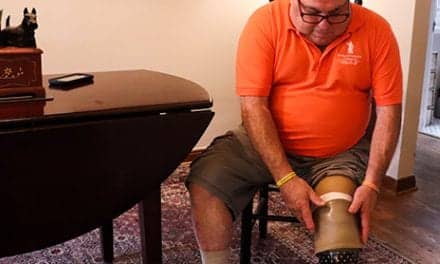The Americans with Disabilities Act (ADA) was signed into law 30 years ago. Has it been effective for people with disabilities? Revelations from the BraunAbility Drive for Inclusion Report Card answer that question in a surprising way.
In the 30 years since the ADA’s passage, the needs of people with mobility disabilities continue to be overlooked and unheard. Only 15% of the mobility disability community surveyed are satisfied with the current effectiveness of its laws. And, nearly half of respondents state they still feel excluded from full societal participation most of the time because of their mobility impairment, BraunAbility notes in a media release.
[ RELATED: BraunAbility Survey Community Aims to Achieve Inclusion and Unity ]
As a way to shed light on the state of inclusion for the mobility disability community with the intent of furthering diversity and inclusion. BraunAbility — a manufacturer of mobility transportation solutions — surveyed both the general population and The Driving Force, the company’s online community of people with mobility impairments and their caregivers.
Revelations from the Report Card
- While 68% of the general public believe people with mobility challenges are fairly accommodated and included in most aspects of society, only 23% of The Driving Force agree with that statement.
- According to The Driving Force, the No. 1 barrier to achieving inclusion is the lack of involvement of people with mobility issues while mobility accommodations are designed and developed.
- 40% of The Driving Force believe mobility challenges are rarely considered when organizations and governments develop programs or accessibility accommodations under the category of “diversity and inclusion.”
- The general public cited people who use wheelchairs as second only to immigrant populations in terms of marginalized groups that have the least input on decisions that impact them; less than women, aging populations, or any race or religion.
- After having experienced restricted mobility and isolation under shelter-in-place orders, nearly 70% of the general population expressed having a greater willingness to understand and accommodate others who experience isolation or challenges because of a mobility impairment.
Respondents Provide a Solution
Respondents from The Driving Force share that the best opportunity to solve for the lack of inclusion is to simply include people with disabilities in the design and development of products or places, the release continues.
“The ADA has made tremendous strides toward advancing life-changing access and inclusion for those of us with mobility impairments, and all people with a disability. But we also recognize that to continue advancing access and inclusion for the next 30 years, it’s imperative that the very people who need and use the accommodations are consulted early in the process. Being part of the BraunAbility’s Driving Force is a first step in seeing this become a reality.”
— Sam Schmidt, wheelchair user, former IndyCar driver, and member of BraunAbility’s Drive for Inclusion Advisory Board
BraunAbility launched Drive for Inclusion with the ultimate goal of amplifying the voices of people with mobility challenges and their caregivers. The Driving Force community provides invaluable insight and feedback through online surveys. In turn, BraunAbility amplifies their voices, helping bring mobility disability-related issues to the forefront.
“At a time when the pandemic is challenging us all to create new accommodations, and society at large is seeking heightened awareness around social justice, it’s imperative this new level of empathy extends to those with mobility challenges.
— Staci Kroon, president of BraunAbility
[Source(s): BraunAbility, PR Newswire]





